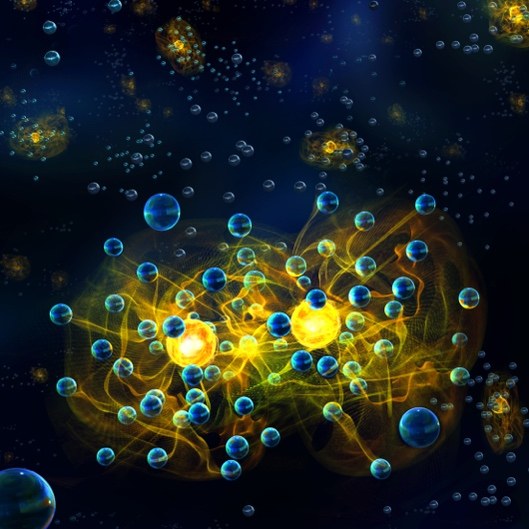Interacting polarons : Simulations of interacting quasiparticles in ultracold quantum gas
Oct 27, 2023
Quasiparticles are an essential tool to describe the complex processes arising from strong interactions in solids. These quasiparticles can be simulated and accurately studied in a radically different system, i.e., an ultracold quantum gas. Now scientists have been able to observe in an actual experiment how quasiparticles called Fermi polarons interact with each other. Their findings have been published in Nature Physics.
An electron moving through a solid generates a polarization of its environment due to its electric charge. The famous Russian physicist Lev Landau introduced in the late 1950’s the concept of quasiparticles to describe the joint entity formed by the electron and the surrounding cloud of excitations. More than ten years ago, a collaboration between theorists Pietro Massignan from the Department of Physics of the Universitat Politècnica de Catalunya (UPC), Georg Bruun of the Department of Physics and Astronomy of the Aarhus university and the experimental team led by Rudolf Grimm at the Institute of Quantum Optics and Quantum Information (IQQOI) in Innsbruck successfully generated quasiparticles with both attractive and repulsive interactions with their environment. For this purpose, the team used a quantum gas of lithium and potassium atoms cooled to nanoKelvin temperatures in a high-vacuum chamber. By means of radio-frequency pulses they transferred very few potassium atoms into a state which experienced arbitrarily-strong attractive or repulsive interactions with the lithium atoms surrounding them. In this way, the researchers generated complex states akin to the one produced by conduction electrons in a solid.
Now, the same team, together with the theorist Miguel-Angel Bastarrachea from the Universidad Autónoma Metropolitana-Iztapalapa, has been able to produce several such quasiparticles simultaneously and observe their interactions with each other. The quantum statistics of the impurities plays a crucial role, and, although one would assume that polarons always attract each other, the theory predicts attractive interactions between bosonic impurities, but repulsive interactions between fermionic ones, as it has now clearly been demonstrated in an actual experiment this surprising change in behavior, which follows as a consequence of Landau's theory. The effect is extremely small, and experimental uncertainties precluded its observation in previous experiments.
Such investigations provide us with insights into very fundamental mechanisms of nature and offer us excellent opportunities to study them in detail.
Publication:

Share: